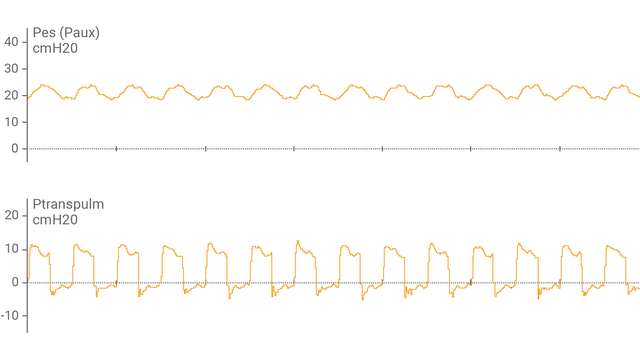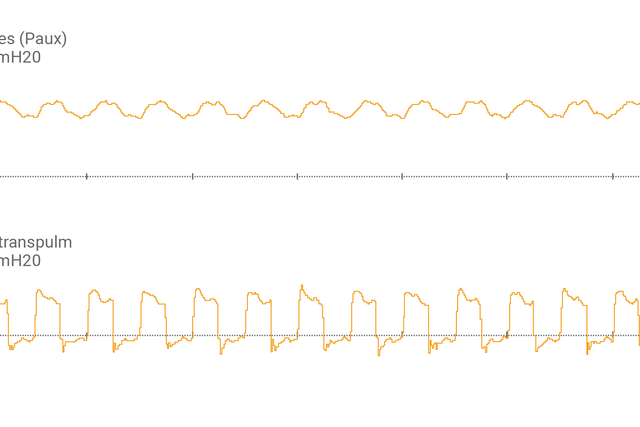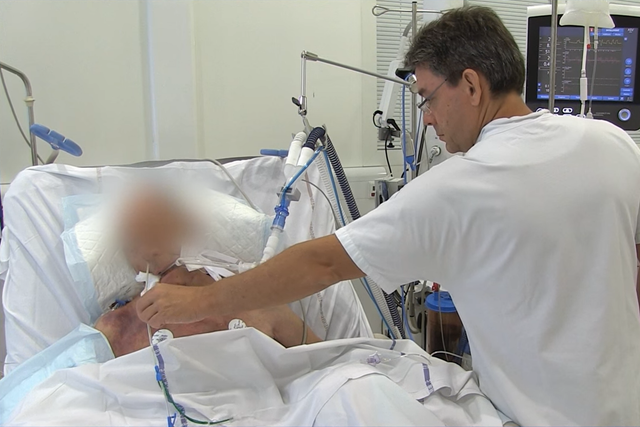
Esophageal pressure (Pes) measurement is a minimally invasive monitoring method, which enables us to determine the transpulmonary pressure.
The most common way to measure Pes is using an air-filled balloon integrated into an esophageal catheter.


After you have connected the esophageal balloon catheter to the auxiliary port and confirmed the correct placement, the ventilator display shows esophageal pressure (Pes), and transpulmonary pressures (Ptranspulm) as a waveform.
You can measure static Ptranspulm using inspiratory and expiratory hold maneuvers.

For assessing recruitability and performing recruitment maneuvers, transpulmonary pressure can also be used in combination with the P/V Tool® Pro.
Let us guide you through all the benefits of transpulmonary pressure monitoring, or see it live in action in your clinic. Book a free on-site demonstration or a callback from one of our specialists: